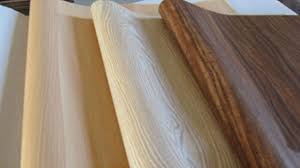- Home
- Exploring Durable and Stylish Contact Paper Options for Enhancing Cabinet Aesthetics and Functionality
Aug . 09, 2024 01:30 Back to list
Exploring Durable and Stylish Contact Paper Options for Enhancing Cabinet Aesthetics and Functionality
Understanding Contact Paper for Cabinets A Comprehensive Guide
When it comes to home improvement and interior design, the use of contact paper for cabinets has gained immense popularity in recent years. This versatile material offers an affordable and creative solution for individuals looking to refresh their living spaces without the hefty price tag associated with traditional renovations. In this article, we will explore what contact paper is, its various applications, and tips for effectively using it on cabinets.
What is Contact Paper?
Contact paper, also known as adhesive laminate or sticky back plastic, is a decorative material that comes in a roll and has a self-adhesive backing. It is widely available in various colors, patterns, and textures, making it an ideal option for DIY home projects. The application process is straightforward; peel off the backing, position the paper, and smooth it out to eliminate bubbles. Once applied, contact paper can add a fresh and modern touch to any surface, especially cabinetry.
Why Use Contact Paper for Cabinets?
There are several compelling reasons to consider using contact paper for cabinets
1. Cost-Effective Replacing or refinishing cabinets can be expensive. Contact paper offers a budget-friendly alternative that can achieve a similar aesthetic without the high costs.
2. Variety of Designs From classic wood grain to vibrant colors and contemporary patterns, contact paper allows homeowners to personalize their cabinets to match their style and decor.
3. Easy Application and Removal Applying contact paper is a hassle-free process that does not require professional skills. Additionally, it can be removed easily without damaging the underlying surface, making it a great option for renters or those looking to update their space frequently.
contact paper for cabinets product

Tips for Applying Contact Paper to Cabinets
To ensure a successful application of contact paper on cabinets, consider the following tips
1. Clean the Surface Before applying contact paper, thoroughly clean the cabinet surfaces to remove any dust, grease, or old adhesive residue. This will improve adhesion and create a smooth finish.
2. Measure Carefully Measure the areas you wish to cover meticulously. Cut the contact paper slightly larger than the intended surface to allow for adjustments during application.
3. Smooth Application When applying the contact paper, start from one edge and gradually peel back the backing while smoothing the paper with a flat tool (like a credit card) to eliminate air bubbles. Take your time to ensure an even application.
4. Trim Excess Once the contact paper is applied, use a utility knife or scissors to trim any excess material along the edges for a clean, polished look.
5. Seal Edges To enhance durability, consider sealing the edges with a clear, waterproof sealant. This will provide additional protection against moisture and wear.
Conclusion
Contact paper for cabinets is an innovative solution for anyone seeking to update their kitchen or bathroom without a massive investment of time or money. Its ease of use, wide variety of designs, and protective qualities make it an attractive option for homeowners and renters alike. Whether you're looking to create a chic, modern aesthetic or want to add a touch of personal flair to your cabinets, contact paper is worth considering. By following the tips outlined above, you can achieve professional-looking results and breathe new life into your cabinetry in no time.
Latest news
-
Discover High Quality Self Adhesive Paper for Cabinets – Durable, Sustainable, Stylish
NewsNov.24,2025
-
Premium High Quality Blue Contact Paper for Furniture | Durable Surface Solutions
NewsNov.23,2025
-
What Drives High Quality Duplex Paper Price? Key Factors and Global Insights
NewsNov.22,2025
-
High Quality Decorative Contact Paper for Cabinets | Durable & Stylish Solutions
NewsNov.22,2025
-
High Quality Stick Paper for Cabinets: Durable, Sustainable, and Stylish Surface Solutions
NewsNov.21,2025
-
High Quality Self Adhesive Cabinet Paper: Durable, Sustainable Finishes for Modern Cabinets
NewsNov.20,2025

